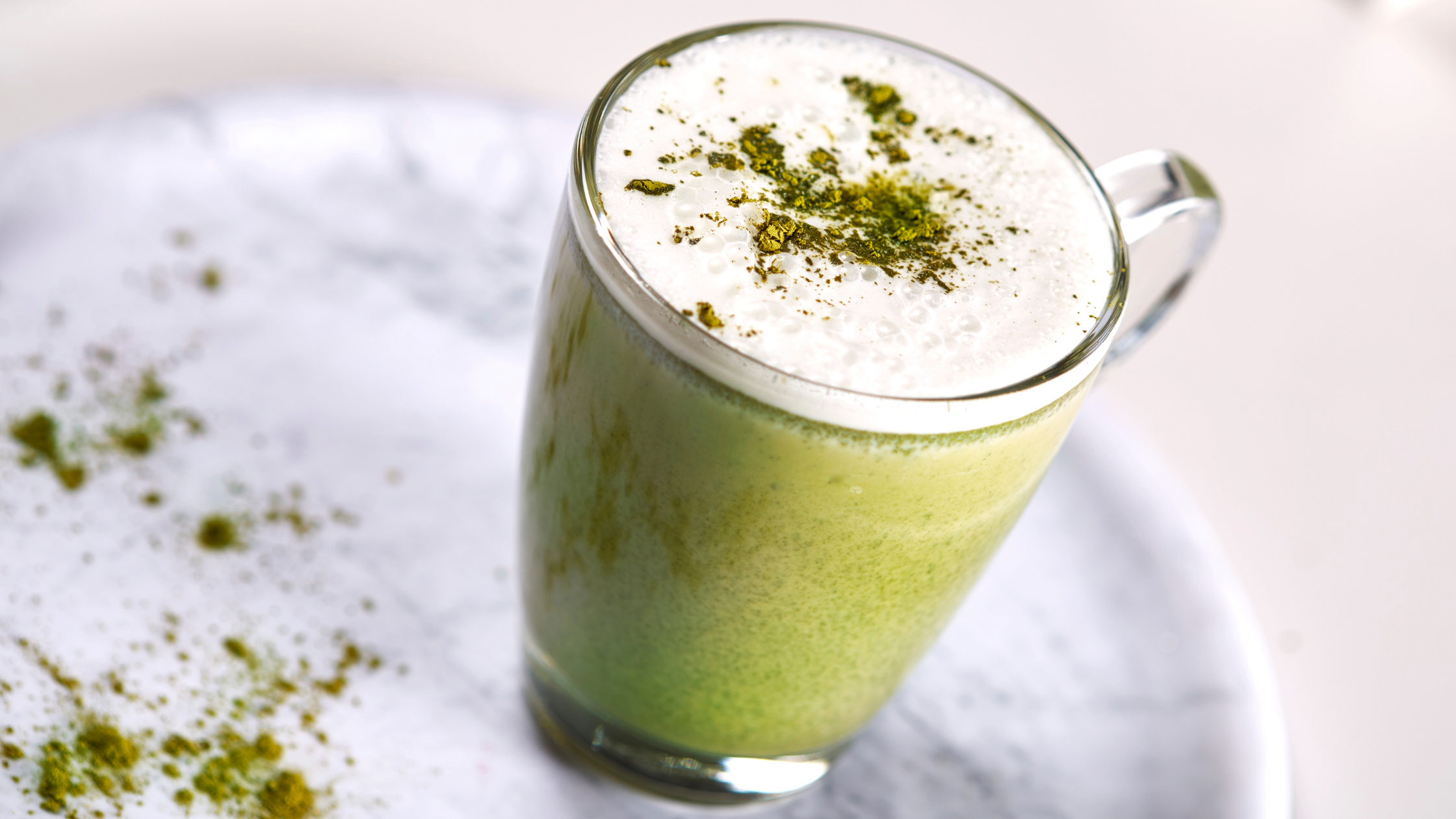Matcha lattes are a delicious, earthy drink that’s growing in popularity for good reason.
With a unique flavor profile that blends grassy and slightly sweet notes, it’s not only tasty but also packed with antioxidants.
Matcha is rich in L-Theanine, which offers a calm, steady energy boost without the crash you get from coffee.
Plus, making it at home is easy, and cheaper than buying it at a café, and you can adjust the sweetness and milk to your liking.
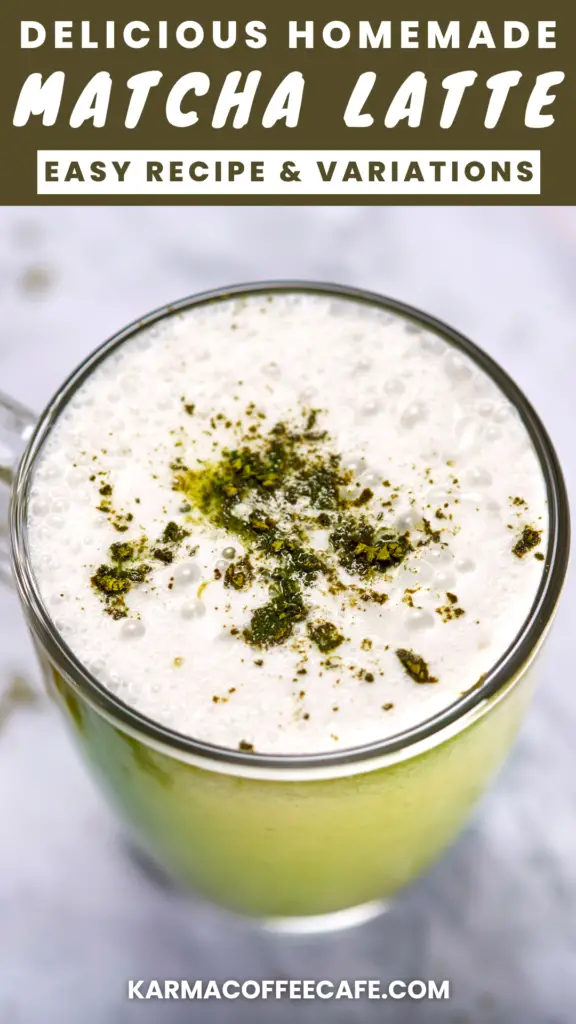
How To Make A Matcha Latte: At A Glance
- Sift the Matcha
- Whisk with Water
- Add Sweetener
- Froth the Milk
- Combine and Serve
What is Matcha?
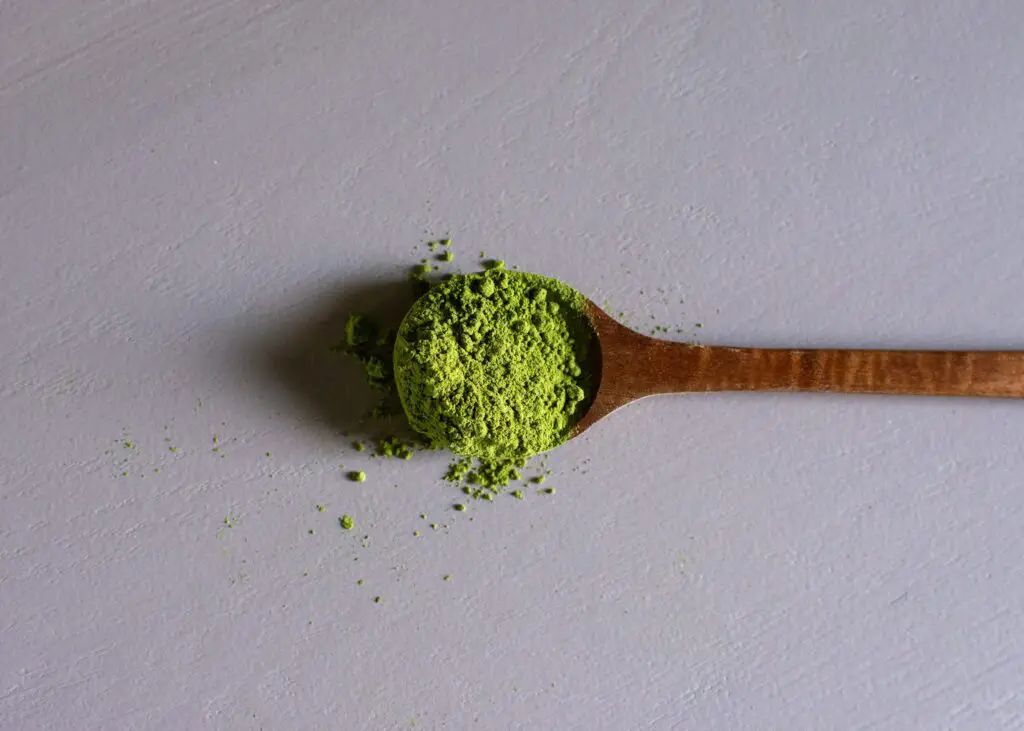
Matcha is a finely ground powder made from specially grown green tea leaves.
Unlike regular tea, where you steep the leaves and discard them, matcha allows you to consume the entire leaf, giving it a vibrant green color and more concentrated nutrients.
There are two main types of matcha: ceremonial and culinary.
Ceremonial matcha is of the highest quality, made from young leaves with a brighter color and sweeter taste, making it perfect for lattes.
Culinary matcha, harvested later, has a more astringent flavor and works well in recipes where it’s mixed with other ingredients.
Benefits of Drinking Matcha Latte

Antioxidants
Matcha is packed with antioxidants, particularly catechins, which help combat free radicals in the body.
This can contribute to cell protection and overall health, reducing the risk of chronic diseases.
The high concentration of antioxidants makes matcha one of the healthiest tea options available.
Energy Boost
One of the standout benefits of matcha is its ability to provide steady energy without the jitters.
Thanks to L-Theanine, a unique amino acid found in matcha, the caffeine is absorbed slowly, giving you sustained energy throughout the day without the crash you might get from coffee.
Customizable
Matcha lattes are incredibly versatile.
You can adjust the sweetness by choosing honey, maple syrup, or stevia, and experiment with different milk options—whether it’s dairy, almond, oat, or coconut milk—to suit your dietary preferences.
This makes matcha lattes a great option for those looking to tailor their drink to specific tastes or nutritional needs.
Key Ingredients

- Matcha Powder: Use 1 to 1.5 teaspoons of ceremonial-grade matcha for the best flavor and smoother texture.
- Milk Options: You’ll need ¾ cup of milk, and you can choose between dairy or plant-based varieties. Oat milk offers a creamy texture, almond milk provides a light nutty flavor, and coconut milk creates a richer, tropical flavor.
- Sweeteners: Optional, but for balance, you can use 1-2 teaspoons of sweetener. Honey, maple syrup, and stevia are popular choices.
Equipment You Need
Whisk
A bamboo whisk, also known as a chasen, is the traditional tool for preparing matcha.
Its fine bristles are perfect for evenly mixing matcha with water, creating a smooth, frothy texture.
If you don’t have a bamboo whisk, a regular kitchen whisk can work, but it may not achieve the same level of frothiness.
The bamboo whisk’s unique design ensures that the matcha powder dissolves fully, preventing clumps.
Milk Frother
A milk frother is an excellent tool for achieving a creamy, café-quality latte.
Frothers help to aerate the milk, creating a velvety foam that enhances the texture of the latte.
While a frother is ideal, you can still achieve a decent result with a whisk or even by shaking the milk in a jar, though these methods may not produce as much froth.
Temperature Control
For the best taste, it’s crucial to control the temperature of your ingredients.
Use water at around 175°F to avoid bitterness in the matcha, and heat the milk to around 150°F.
Overheating either can result in a bitter or burnt taste, so using a kitchen thermometer can be helpful to maintain the correct temperatures.
Step-by-Step Matcha Latte Recipe
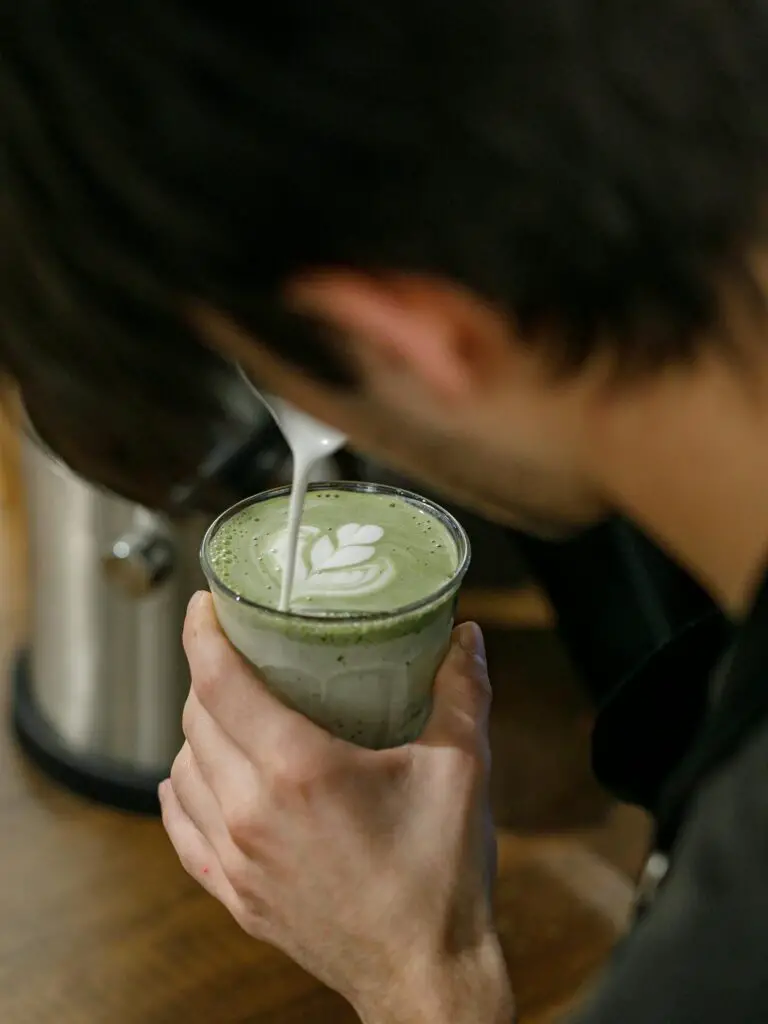
- Sift the Matcha: Start by sifting 1 to 1.5 teaspoons of matcha powder into your mug or bowl to ensure there are no clumps.
- Whisk with Water: Add 2 tablespoons of hot water (around 175°F) to the sifted matcha. Use a bamboo whisk to briskly whisk the matcha in a “W” or zig-zag motion for 30-45 seconds until frothy.
- Add Sweetener: Stir in your sweetener of choice. 1-2 teaspoons of honey, maple syrup, or stevia work well.
- Froth the Milk: Heat ¾ cup of your preferred milk (oat, almond, coconut, or dairy) to around 150°F. Use a milk frother to create a creamy, foamy texture.
- Combine and Serve: Pour the frothed milk over the whisked matcha and gently stir to combine. Garnish with a light dusting of matcha powder or a drizzle of honey if desired. Enjoy your matcha latte fresh while it’s hot.
Variations of The Matcha Latte
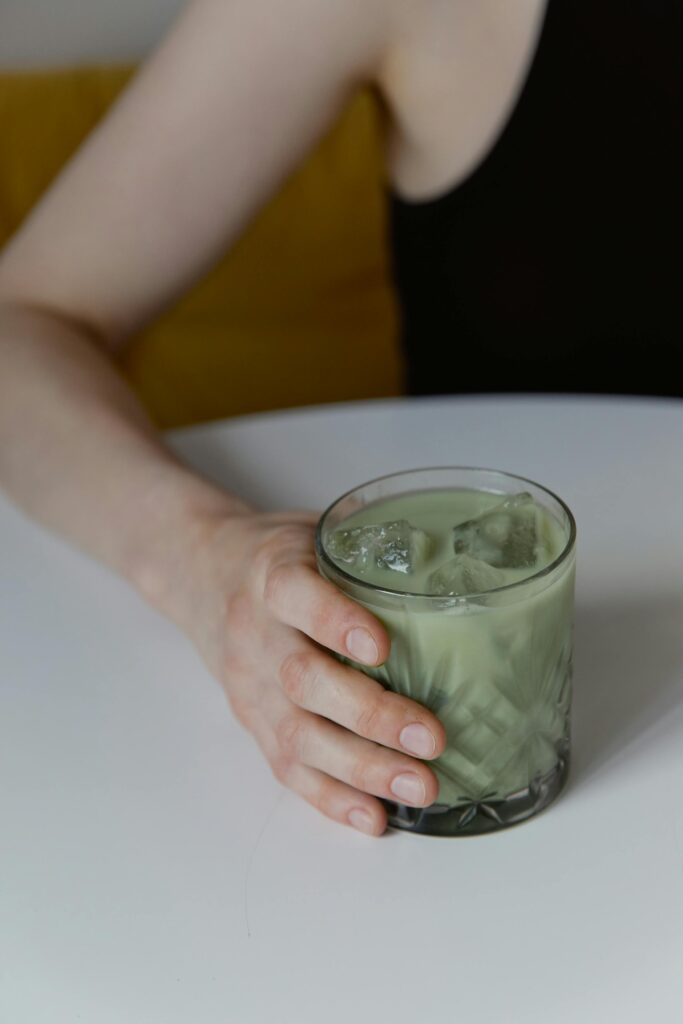
Iced Matcha Latte
For a refreshing twist, you can easily turn your matcha latte into an iced version.
Simply whisk 1 teaspoon of matcha with 2 tablespoons of water, add ¾ cup of chilled milk (like oat or almond milk), and pour over ice.
This is perfect for hot days when you want a cool, energizing drink.
Vanilla Matcha Latte
Add ½ teaspoon of vanilla extract to your matcha mixture for a touch of sweetness and warmth.
Vanilla complements the earthy flavors of matcha and gives your latte a smooth, dessert-like finish.
Dirty Matcha Latte
For a bolder flavor, add a shot of espresso to your matcha latte.
Known as a “dirty matcha,” this variation blends the earthy taste of matcha with the strong, rich flavor of espresso for a unique caffeine kick.
Floral Infusions
Experiment with infusions like lavender, rose, or mint.
Simply steep a small amount of dried lavender or rose petals in your hot water before adding the matcha, or add a few fresh mint leaves for a refreshing herbal touch.
Tips for the Best Matcha Latte
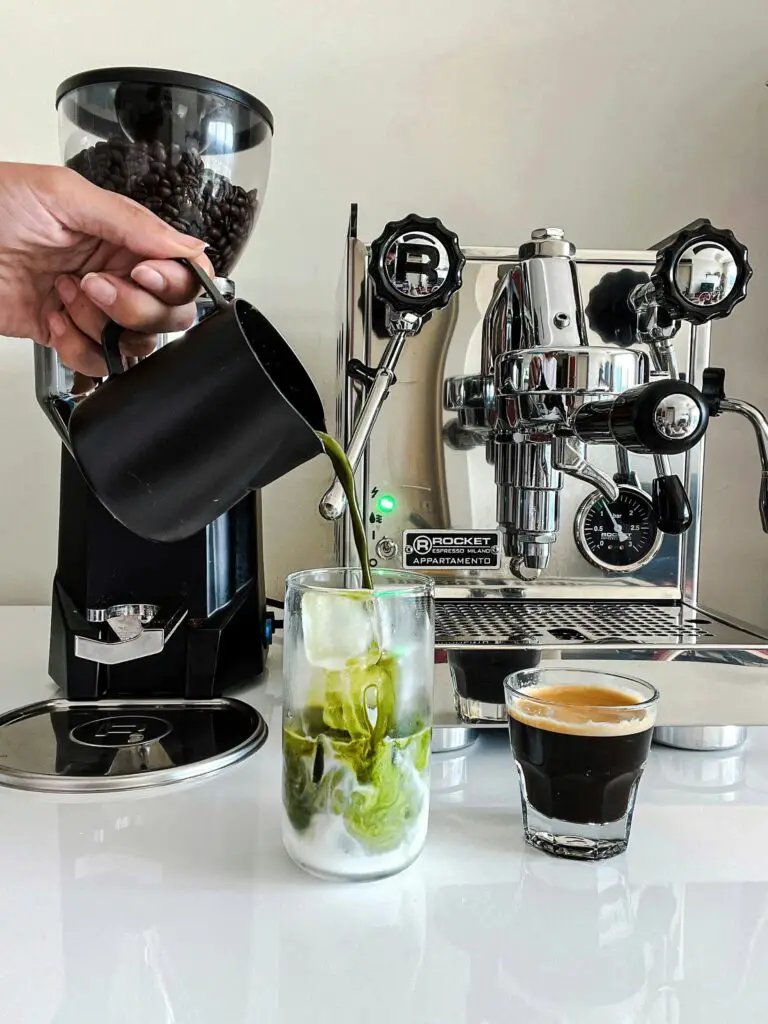
Use Ceremonial-Grade Matcha
For a smooth, sweet, and less bitter flavor, always choose ceremonial-grade matcha.
It’s made from young, high-quality tea leaves, which result in a more refined taste compared to culinary-grade matcha, making it ideal for lattes.
Avoid Using Hot Water
To prevent bitterness, make sure your water is not too hot.
Aim for around 175°F.
Water that’s boiling or too hot can scorch the matcha and lead to a bitter taste.
Adjust Matcha and Milk Ratios
Everyone’s preferences are different, so feel free to adjust the amount of matcha and milk to suit your taste.
For a stronger matcha flavor, increase the amount of matcha powder slightly, or if you prefer a creamier latte, add more milk.
Conclusion
Making your own matcha latte at home is easy, fun, and gives you full control over the flavors.
You can experiment with different milk options, and sweeteners, and even add unique twists like vanilla or mint.
Plus, it pairs perfectly with breakfast treats like muffins or toast.
So, grab some ceremonial-grade matcha and start experimenting—you might just find your new favorite drink!


